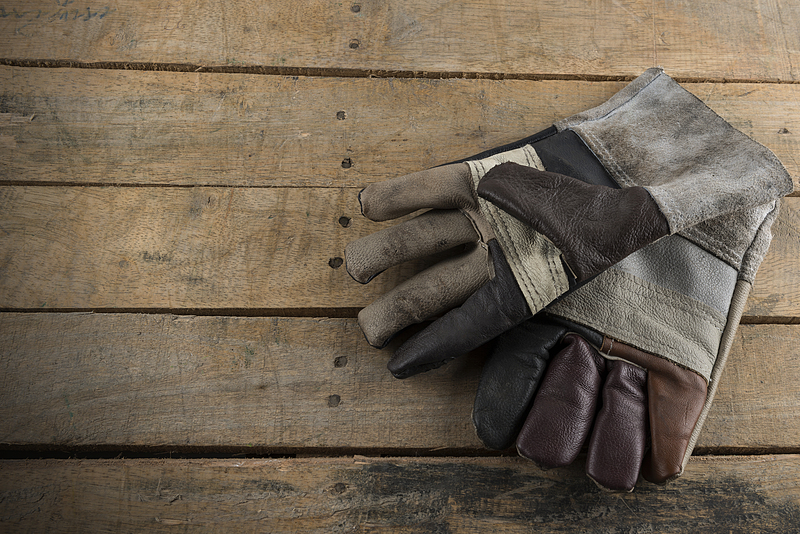Your Guide to Lifting Heavy Objects Solo
Posted on 11/06/2025
Your Guide to Lifting Heavy Objects Solo
Lifting heavy objects alone can be a daunting task, whether you're moving furniture, transporting equipment, or tackling a home improvement project. While it's always safest to have help, sometimes that's not possible. Knowing the right techniques, using the appropriate tools, and following safety guidelines is crucial to prevent injuries and get the job done efficiently. In this comprehensive guide, discover everything you need to know about solo heavy lifting: methods, safety tips, equipment, and expert hacks tailored for situations where you must move heavy items by yourself.
The Risk of Lifting Heavy Things Alone
Attempting to lift heavy objects by yourself exposes you to the risk of physical injuries such as muscle strains, sprains, disc herniation, and more. According to occupational safety experts, improper lifting techniques are a leading cause of back injuries globally. Understanding these risks and the proper precautions is the first step in safeguarding your well-being while moving heavy items solo.
- Muscle strains and sprains: From improper bending or twisting
- Back injuries: Often from not keeping the back straight or lacking core stability
- Crushed fingers/toes: Dropping or pinching items while lifting
- Fatigue-related accidents: Lifting too much at once leads to exhaustion and careless mistakes

Top Preparation Tips Before You Lift
Analyze the Load
Before moving anything heavy, assess the object. Estimate its weight and size, and determine the best way to grip it. If it's too heavy or bulky to manage alone, wait until you have assistance.
Clear the Path
Obstacles in your way can cause tripping or force awkward maneuvers. Always clear a direct path before lifting heavy objects solo. Ensure any doors are propped open and all surfaces are dry.
Wear the Right Clothing
- Non-slip shoes: For secure footing
- Comfortable clothing: Allows freedom of movement
- Gloves: For better grip and hand protection
Warm Up Your Body
Just as with any demanding physical activity, stretching and warming up your muscles help prevent injuries. Pay close attention to your back, shoulders, and legs.
Correct Form for Lifting Heavy Objects By Yourself
Proper technique is essential for preventing injuries and effectively lifting heavy loads solo. Use the following step-by-step approach:
- Stand close to the object, with your feet shoulder-width apart for better balance.
- Squat down by bending your knees and hips--not your waist.
- Keep your back as straight as possible and engage your core muscles.
- Get a good grip on the object with both hands.
- Lift slowly by driving through your heels and straightening your legs, keeping the load close to your body.
- Avoid any sudden jerks or twisting movements while carrying the item.
- Set the object down by reversing the process: bend your knees, not your waist.
Essential Tools and Equipment for Solo Heavy Lifting
Using the right tools can make all the difference when it comes to solo heavy lifting. Consider investing in or utilizing the following:
- Dollies and hand trucks - These wheeled platforms allow you to roll heavy items with minimal lifting.
- Furniture sliders - Placed under heavy furniture or appliances, sliders reduce friction, so you can glide items across floors.
- Lifting straps or harnesses - Distribute weight more evenly and reduce strain on your back.
- Moving blankets or pads - Protects both the object and your floors.
- Pry bars or crowbars - Useful for tipping or nudging heavy items up from the floor.
Making Your Own Moving Aids
If you don't have commercial tools, you can improvise:
- Thick towels or cloths as sliders for smaller loads
- Strong ropes for pulling or gently lowering objects
- A wheeled office chair as a temporary dolly for lighter loads
Pro Techniques for Lifting and Moving Heavy Objects Alone
The Push, Don't Pull Rule
Whenever possible, push heavy objects across a flat surface rather than pulling them. Pushing is more stable, safer for balance, and uses powerful leg muscles rather than the weaker lower back.
Break It Down If Possible
Many large items can be disassembled, lightening your load and simplifying the process of lifting heavy items single-handedly. Remove drawers, detachable legs, or any easily separable parts. Every pound counts!
Leverage Inclined Planes
Ramps, boards, or even sturdy cardboard can help you slide items up or down short elevations rather than carrying them. Utilize gravity to your advantage.
Rollover: The Rotation Technique
With rounded objects or cylindrical containers, roll them instead of lifting whenever feasible. For square, flat, or boxy items, carefully "walk" the item end over end.
Use the Shoulder Carry (When Safe)
- For long items such as boards or pipes, hoist one end onto your shoulder, keeping the object balanced and your path clear.
- Never try this with excessively heavy or fragile items!
Safety Best Practices for Solo Heavy Lifting
Accidents often happen when we rush or underestimate the difficulties of lifting heavy things on our own. Keep these golden rules in mind:
- Know your limits: Never try to lift more than you can safely handle, even with perfect technique.
- Take frequent breaks: Fatigue causes careless mistakes.
- Communicate: Let someone know you are moving a large object solo, in case you need assistance or there's an accident.
- Focus on your footing: Always maintain firm footing and be alert for wet or uneven surfaces.
- Use both hands and keep the load close: This stabilizes your center of gravity.
- If in doubt, don't lift! Sometimes waiting or finding creative solutions is the safest course.
Situations Where Heavy Lifting Alone is Unavoidable
There are scenarios where lifting heavy items solo is simply necessary: solo movers, warehouse workers, rural homeowners, or creative DIYers. In such cases, strong preparation, technique, and smart equipment choices make the difference between a job well done and a trip to the emergency room.
Moving Apartments or Houses Alone
If you must relocate without help, begin with the lightest items and gradually progress to heavier furnishings. Pack strategically: Place heavier objects in small, manageable boxes.
Working in Garages or Workshops
Tinkerers often have to move engines, compressors, or metalworking equipment on their own. A well-equipped garage with dollies, ramps, and lifting rigs is invaluable for safety and efficiency.
Home Renovation Projects
Installing appliances, laying tile, or repairing decks frequently demands solo lifting. Always utilize moving aids and avoid overexertion.
Post-Lifting Recovery and Care
Even with the best preparation, lifting heavy objects alone takes a toll on your body. Here's how to recover and care for yourself post-lift:
- Stretch and hydrate: Loosen up stiff muscles and replenish fluids.
- Apply ice or heat to sore spots: This helps prevent inflammation or relieve muscle tightness.
- Use over-the-counter pain relievers: If minor aches develop.
- Monitor for warning signs of injury: Persistent pain, numbness, or unusual weakness warrants medical attention.
Common Questions About Lifting Heavy Objects by Yourself
What is considered a "heavy object"?
The definition of "heavy" varies by individual strength, but generally, experts recommend seeking help for anything above 50-75 pounds (22-35 kg) per person. Items awkward in shape or high in density can require more caution, even at lower weights.
Can I move a refrigerator or washer/dryer alone?
With the help of an appliance dolly, sliders, and careful planning, it may be possible. Always secure doors and loose parts, and avoid going up or down stairs alone with extremely heavy appliances.
Should I wear a back brace while lifting?
Back braces provide some additional support but are not substitutes for proper technique and caution. Rely on strength from your legs and core, not your lower back.
How do I avoid scratches and damage to floors or walls?
- Lay down moving blankets or cardboard under objects for protection
- Use furniture sliders to glide items effortlessly
- Go slowly and have spotters for tight doorways or corners when possible

Summary: The Golden Rules of Lifting Heavy Objects Solo
- Plan every move and analyze your route beforehand
- Use your legs, not your back
- Keep loads close to your center of gravity
- Utilize tools and moving aids whenever available
- Know your limits and don't take unnecessary risks
Conclusion
Knowing how to safely lift heavy objects alone can empower you to tackle life's larger tasks, from moving homes to rearranging your garage with confidence. Preparation, technique, and the right equipment are your best allies for safe solo heavy lifting. If a situation ever feels too risky, don't hesitate to seek help--after all, your safety is too valuable to compromise.
For more expert tips and techniques for moving heavy items solo, browse our archive or consult with certified moving professionals. Stay safe and lift smart!







